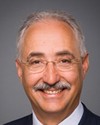Mr. Speaker, I am pleased to rise today to speak in support of Bill C-3, which is legislation for which I and my colleagues from British Columbia, Manitoba, Ontario, the province of Quebec and New Brunswick have been asking.
I commend the minister for being very open and incredibly up to speed. He is very seized with the priority of our international crossings and specifically with the corridor in Windsor-Detroit. After having many meetings with him and his staff, I commend him for making a very serious statement.
This is the second piece of legislation, following our important federal accountability act. In the previous Liberal government, there was an incomplete version of the bill. It was the Liberals' 43rd piece of legislation and it never made it through.
Clearly it is a priority for the Conservative government. We are making a clear statement that international trade, the environment and our communities are Conservative priorities. The fact that we continue to speak on the issue of the international bridges and tunnels act clearly demonstrates the scope of the legislative vacuum that was left by the previous Liberal government, which this Conservative bill proposes to fill.
Back home and just outside of my riding in the city of Windsor, we have the busiest international border crossing in the world. At peak times, we have $1 million per minute of two-way trade that traverses through that corridor. We have anywhere from 7,000 to, on peak days, 10,000 trucks per day that cross through the corridor.
We also have very aging infrastructure there. We have a rail tunnel that was built in 1909. We have a vehicle tunnel that was built in the late twenties. The Ambassador Bridge, which is the busiest crossing, was built as well in the late 1920s. The most recent piece of infrastructure we have is more than three-quarters of a century old.
Clearly there is a need to add additional capacity to that corridor. We need infrastructure renewal as our economy and trade continues to grow.
The federal government is one of four partners in a binational process in the Windsor-Detroit corridor that is working toward this goal. We need Bill C-3, however, to allow the federal government to have the proper oversight for a new crossing in the corridor as well for the existing assets. Getting the infrastructure and having the right powers behind it is very important.
The city of Windsor has 9.3% unemployment. That is one of the highest of the cities in Canada right now. Investment has been leaving the Essex-Windsor region. A number of companies have closed their doors over the last few years, mostly in the automobile sector and the parts related sectors.
Other investment is clearly not coming to the region. Industries have decided that the border is a problem right now and there is no predictability, as the industry talks about, of crossing at that corridor on time for just-in-time industries. They are choosing not to locate their factories there and bringing new jobs to the region. They are choosing other locations. They are locating in Michigan, for example, Ohio, or even into the southern United States. They are just not coming to our communities.
I know from my colleague from Chatham-Kent—Essex, were it not for some federal government intervention, his riding would have lost the Navistar plant as well. It would have gone to points south.
Economically speaking, the border is an ever present reality to the communities. It is also very important for the number of people who are employed in these industries, for the quality of life for their families and for our ability to support key social programs like health care and education, which are vital for the quality of life. If those jobs go, the tax dollars go with them, and the charitable dollars. Our region is one of the most giving in the entire nation. That is because we have high paying manufacturing jobs to support it.
In the last three years the United Way, just as an example, has continued to decline, year over year, in the amount of charitable giving. The jobs that are leaving our communities are having a very real impact on community projects through the lack of charitable giving. Bill C-3 would go a long way in giving the federal government the necessary powers to continue to move forward on new capacity at the Windsor corridor.
In a broader sense our 24 international bridges and tunnels that handle vehicle traffic have been governed for a long time by an assortment of inconsistent mechanisms, a patchwork of different people having different control over the crossings. This has resulted in the authorization of everything from the incorporation of a company to construct an international crossing to the creation of a binational authority to manage and operate the crossing.
Section 92 of the Constitution Act establishes that international crossings are within the federal jurisdiction, but the government has really been unable to exercise its authority adequately and across all those crossings because of the absence of a legislative framework that gives the ability for general application relevant to all crossings.
Historically we have had the enactment of several individual special acts of Parliament, some of which predate Confederation, where the preferred method of previous federal governments was to authorize the construction and meet the specific reality of international crossings by these individual acts of Parliament.
Any time a new crossing was built, it required a new act of Parliament. If another one was to be built, there had to be another separate act of Parliament. As a result, more than 53 special acts of Parliament spanning, pardon the pun, 140 years of our nation's history were created independently to deal with the specific reality of each of Canada's 24 international bridges and tunnels that carried vehicle traffic.
What occurred on 9/11 was a very important turning point with respect to our international crossings. I can speak with some first-hand knowledge of it from living in the Windsor-Essex region. In the immediate aftermath of 9/11, there were 12 kilometre backups of trucks on Huron Church Road to the end of the 401. That was not just in one lane. That was in two lanes of traffic and sometimes three. Seeing this type of lineup, trucks would go down neighbourhood residential streets, where trucks are not allowed, trying to find shortcuts to the bridge, hoping to get on a little quicker. There was this massive gridlock, endangering the safety of residents of the communities on either side of Huron Church Road.
Vehicles sitting and idling caused pollution. Resources of the municipalities of Windsor and LaSalle were stretched, as one example, due to the payment of overtime to police officers who sat at individual intersections to ensure that trucks were not blocking them. I remember trying to cross Huron Church Road with that kind of truck traffic. After the light turned green one would have to wait an awful long time to make sure a truck was not going to try to go through. In that situation a tie goes to the truck and that is not a good scenario.
The events on 9/11 also brought us the reality on the U.S. side, one that we cannot necessarily change because it is a U.S. mentality, of security trumping trade. It is very important. It really affects how we do business across our international crossings. The security provisions in Bill C-3 would allow the government to obtain detailed information on security issues from all bridge authorities. Currently that is not happening.
More specifically, if we take the example of the Ambassador Bridge, which is a private entity, it reportedly contracts out safety for the bridge asset to a private company. That is what has been reported, although the public does not have the scrutiny of that for sure. In a heightened climate where Canada might be on Osama bin Laden's terrorist list, it becomes a very valuable asset worth protecting. Bill C-3 would ensure that this and other vital assets would be prepared for the post 9/11 realities.
However, in a post 9/11 era, in the climate of heightened security, it must co-exist with a heightened interest in expanding our trade corridors. The federal oversight of international borders must protect the national interest by ensuring environmentally sound, economically efficient, secure and safe international crossings. Bill C-3 promises to address many of these problems and others filling the legislative gap, providing the federal government with several mechanisms that would provide authorization for the construction, alteration, operation, maintenance, repair, transfer, safety and security of international crossings.
A key mechanism of the bill on which I want to focus a bit more is a provision that would authorize the governor in council, on the recommendation of the Minister of Transport, Infrastructure and Communities, to issue letters patent of incorporation for the establishment of a corporation to construct and operate an international crossing. This provision would effectively allow the governor in council to issue such letters patent to create any company to build or operate an international bridge or tunnel. The corporation would be authorized to carry out its activities both inside and outside of Canada where so permitted.
The comprehensive information found in the letters patent, such as the composition of the board of directors, their obligations and conduct, the ownership of the corporation and its management, the financial reporting requirements and borrowing authority and any other provision which is deemed appropriate, would establish the limitations of the corporation and would promote the accountability of these corporations in a manner similar to corporations subject to the Canada Business Corporations Act. In addition, so as to effectively issue letters patent of incorporation, the governor in council would also be authorized to amend, revoke and make regulations pertaining to letters patent.
It is worth mentioning that the letters patent provision would be an enabling provision and would not be mandatory. As such, any new crown corporation or corporation otherwise established could still build or operate an international crossing. In fact, it may be the case that the specific realities of the new international crossing or its body corporate, would require special considerations.
For example, purely private corporations would likely require incorporation pursuant to the Canada Business Corporations Act while purely public corporations could be made crown corporations. It may even by the case that incorporation pursuant to specific U.S. federal or state legislation could be required, such as our Niagara region bridges.
What is clear is the provision would provide the federal government with the flexibility to incorporate any company to build or construct an international crossing without necessarily resorting to the Canada Business Corporations Act, U.S. legislation or a special act of Parliament.
Furthermore, in order to promote growth in the Canadian economy while simultaneously protecting national interests, the legislative framework for international crossings should be sufficiently flexible so as to meet new and emerging issues. Alternate means of organizing and governing the corporations that construct and operate our international bridges and tunnels should be sufficiently flexible to adapt to private and public interests. The letters patent provision would provide the government with sufficient flexibility to create a company, subject to governmental safeguards, without being subject to the rules that govern crown corporations.
Therefore, the bill would allow for the consideration of alternate methods of organization such as public-private partnerships, binational authorities and corporations that are neither public nor public in nature where government oversight would be warranted and vital to the efficient construction and operation of the international crossing.
I know my colleagues in the New Democratic Party have raised some issue over control and ownership. Bill C-3 would extend sufficient control for the federal government, the first time it is going to do so. I know we have the binational process in the Windsor corridor, for example, where the federal and Ontario government, the municipalities, citizens, residents and citizen groups are all participating in moving forward on questions of governance for this specific crossing in that process. This has been a very good and productive, publicly involved process to determine issues of governance on the new crossing.
Bill C-3 and the letters patent provision would attempt to minimize ineffective use of legislative power that for years was exercised to create separate, independent, and inconsistent pieces of legislation on a case by case basis. This bill would fill that legislative gap by offering legislation of general application that would apply broadly to all international crossings.
I am asking all members of the House to seriously consider and support this bill, and the important role that it would have in providing Canadians with the tools to effectively manage and govern their international crossings, while protecting Canada's national interests.









